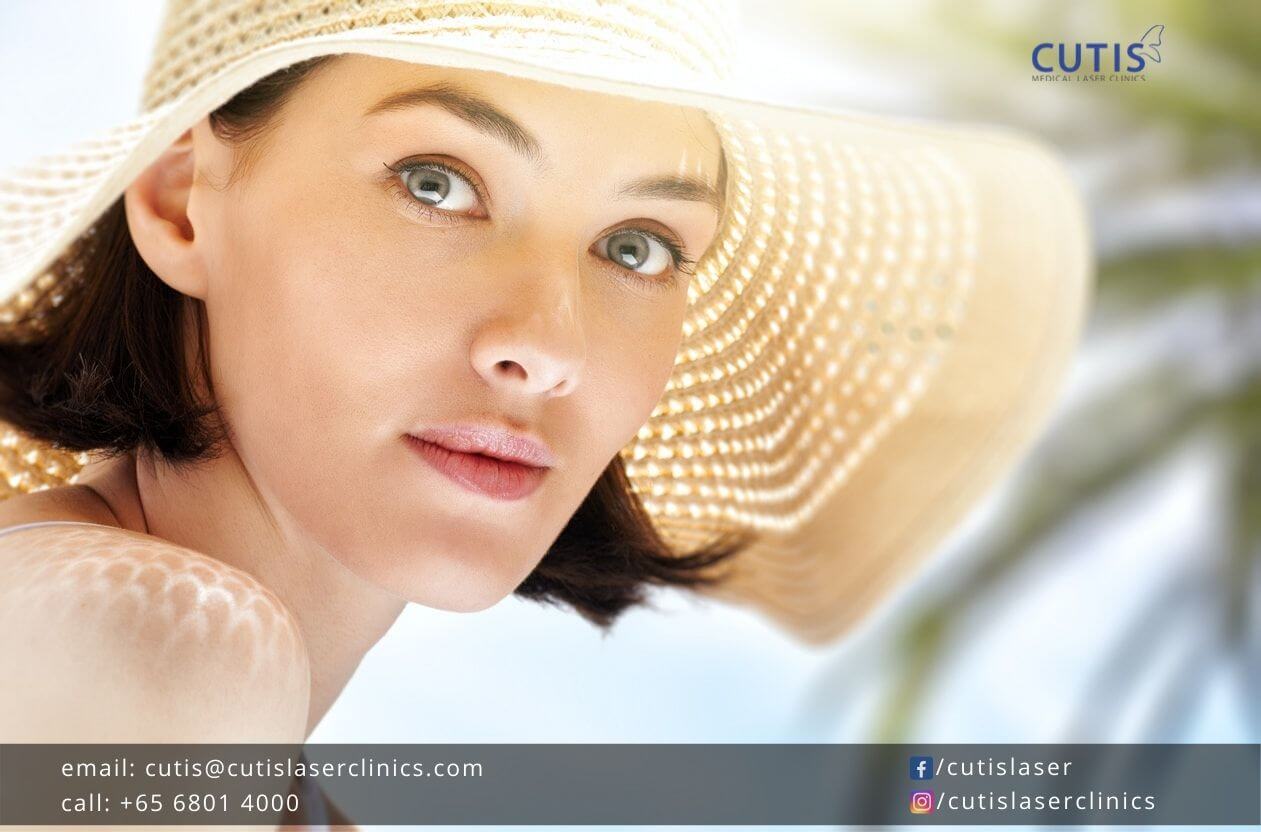 Many of those who desire a sun-kissed glow consider the use of tanning beds or getting help from the sun. While both techniques may help you get that bronzed complexion, they can damage your skin and raise your risk of skin cancer. Both can also make your skin age rapidly.
Many of those who desire a sun-kissed glow consider the use of tanning beds or getting help from the sun. While both techniques may help you get that bronzed complexion, they can damage your skin and raise your risk of skin cancer. Both can also make your skin age rapidly.
The basics of tanning
Exposure to UV radiation from the sun or tanning beds can cause your skin to darken or have a tan appearance. Unfortunately, having that “glow” is an indication of DNA injury to your skin. Also, your skin darkens or produces more melanin (the pigment that gives your skin and eyes color) as a way of preventing further injury to the skin.
Whether done indoors or outdoors, tanning accelerates skin aging. Sagging skin, age spots, and wrinkles also appear sooner in those who like to tan. It can also increase your risk of developing skin cancers, like melanoma, basal cell carcinoma, and squamous cell carcinoma.
But, are tanning beds safer than the sun?
No. Neither is safer nor healthier. While some believe that tanning beds are better and are a good source of vitamin D, this is not necessarily the case. In fact, according to the Skin Cancer Foundation, indoor tanning is dangerous, as UVA rays from tanning beds might raise your risk of developing melanoma.
It is also a misconception that tanning is a healthy way to get vitamin D. Keep in mind that it is the UVB radiation that produces vitamin D. Tanning of the skin, on the other hand, is mostly due to UVA radiation. This only means that tanning beds will never provide you with the vitamin you need, but only raise your risk of skin cancer.
Protecting your skin
If you want to avoid rapid skin aging and lower your risk of skin cancer, it is best to limit prolonged and unprotected sun exposure. Apart from avowing both indoor and sun tanning, here are a few other tips to prevent skin damage.
- Apply a broad-spectrum sunscreen daily (at least SPF 30).
- Avoid sun exposure during the peak hours (between 10am and 4pm).
- Wear a brimmed hat to protect your hair, eyes, and skin from the harmful rays.
- You can also wear UV protection glasses for further protection around the eye area and avoid squinting.
- Wear clothing that can cover your skin from the sun like long pants and long-sleeved shirts.
Is there a safer way to get a tan?
If you really want a sun-kissed glow, it is best to consider a self-tanner or sunless tanning products. This gives you that tan look without rapidly aging your skin or increasing your risk of skin cancers. A self-tanner can also make your stretch marks less noticeable, as opposed to tanning, which can worsen their appearance.
Just do take that when using sunless tanning products, you still need to wear sunscreen. Choose a broad-spectrum, water-resistant sunscreen with an SPF of 30 or higher. This is because self-tanners don’t offer skin protection against the UV rays.
What if you already have sun damage like dark spots?
The use of sunscreen and following other sun protection measures can help prevent further damage to the skin. If you, however, are looking to reverse the effects of skin damage or lighten dark spots, non-invasive aesthetic treatments are worth considering. These include:
- Limelight IPL – this draws out the brown spots in the skin using intense pulsed light (IPL) technology. It can treat brown spots, freckles, and uneven complexion on the face.
- VI Peel – this stronger type of chemical peel can treat a number of skin concerns, including fine lines, sun damage, brown spots, freckles, and acne marks.
- Pear Laser Resurfacing – it uses pulses of light that helps remove a portion of sun-damaged skin surface. It lets the skin form a natural protective dressing that peels off after a few days and reveals healthier skin.
Cutis Laser Clinics in Singapore offer these treatments and other procedures for fading dark spots and improving the appearance of aging skin. Contact us today and schedule a consultation with our aesthetic doctors to determine with treatments best suits your needs.
- If you would like to be an informed patient, please contact us at +65-6801-4000 or
hello@cutislaserclinics.com. - Cutis Medical Laser Clinics, 9 Scotts Road Pacific Plaza, Scotts Medical Center #08-07, Singapore – 228210
+65-6801-4000 - hello@cutislaserclinics.com
